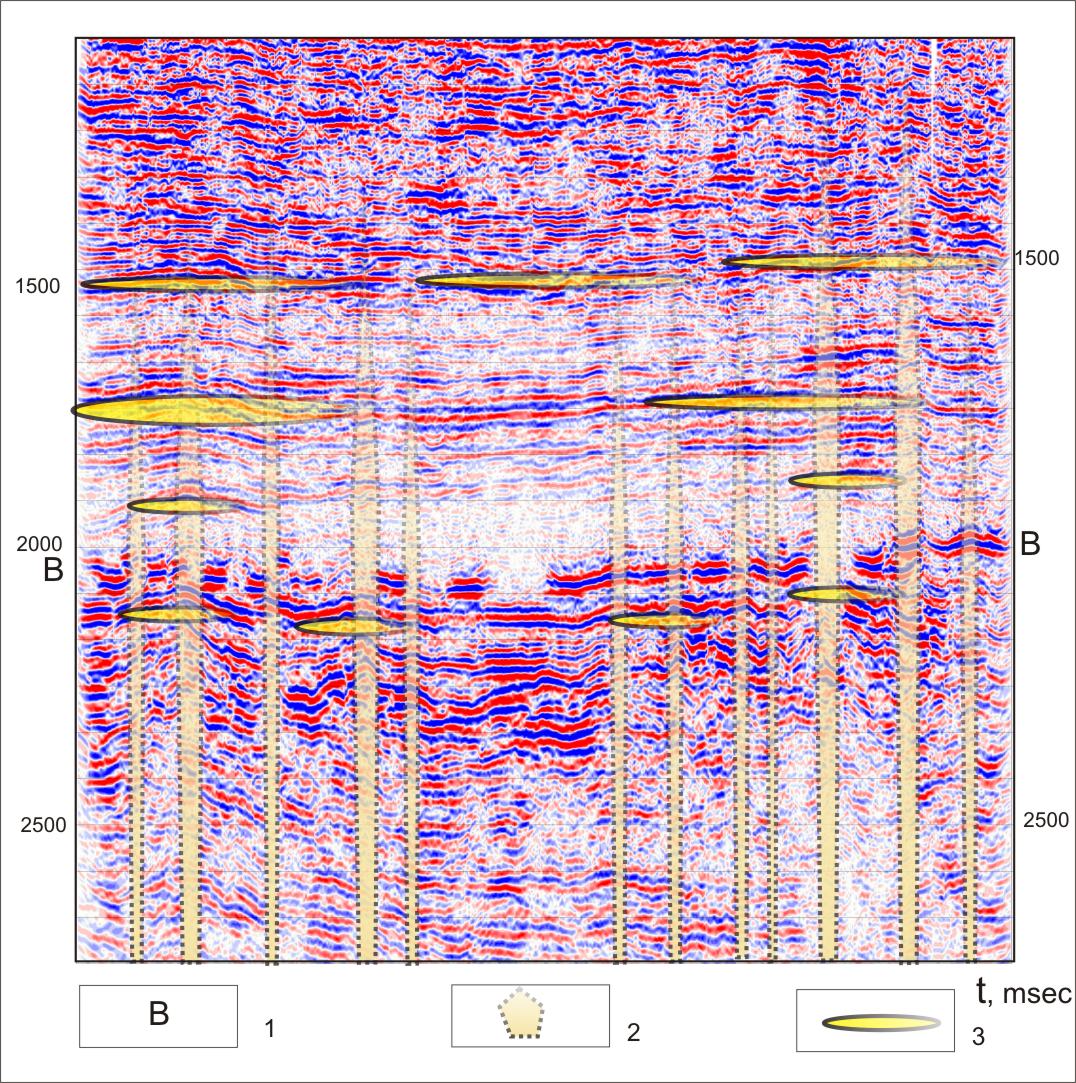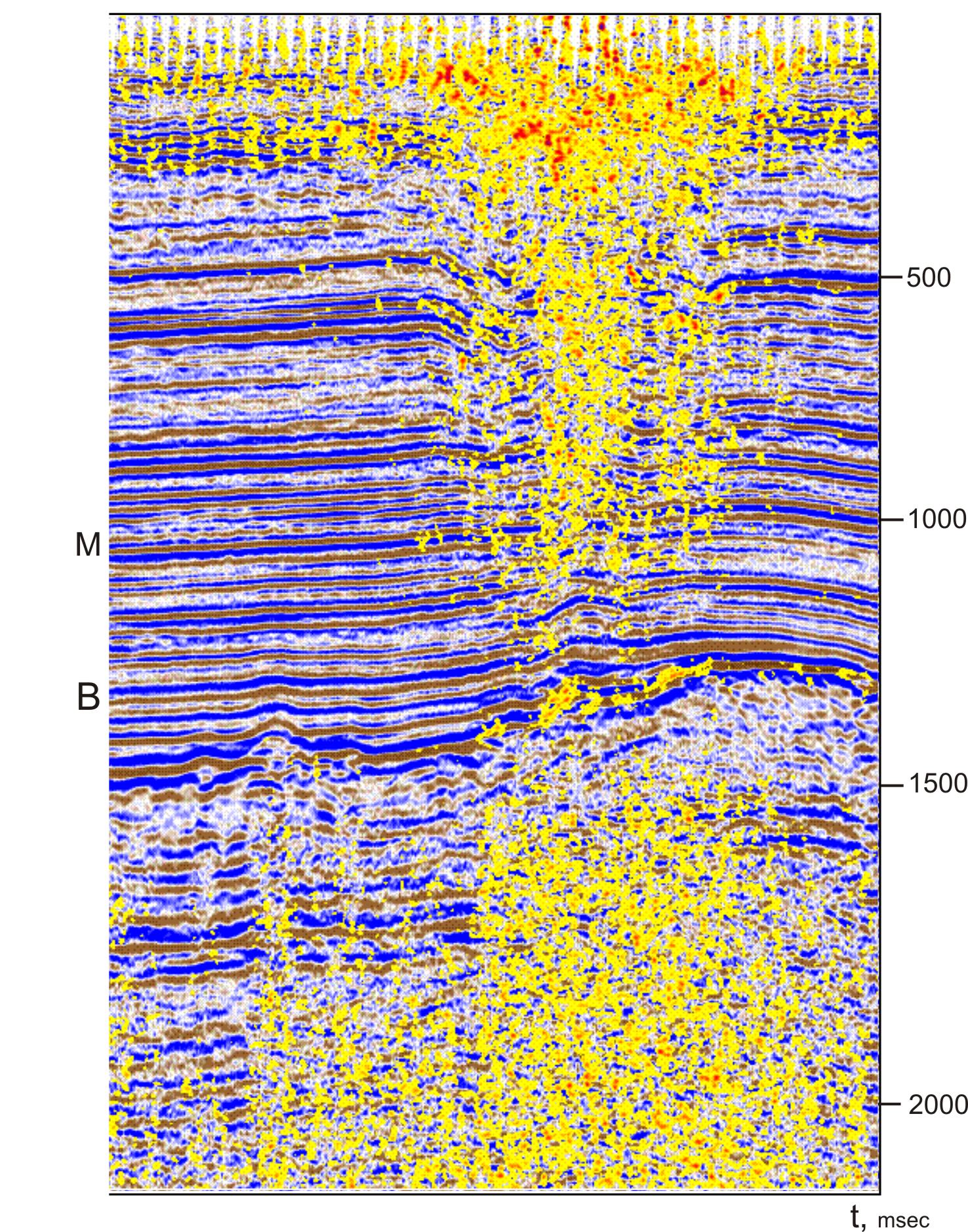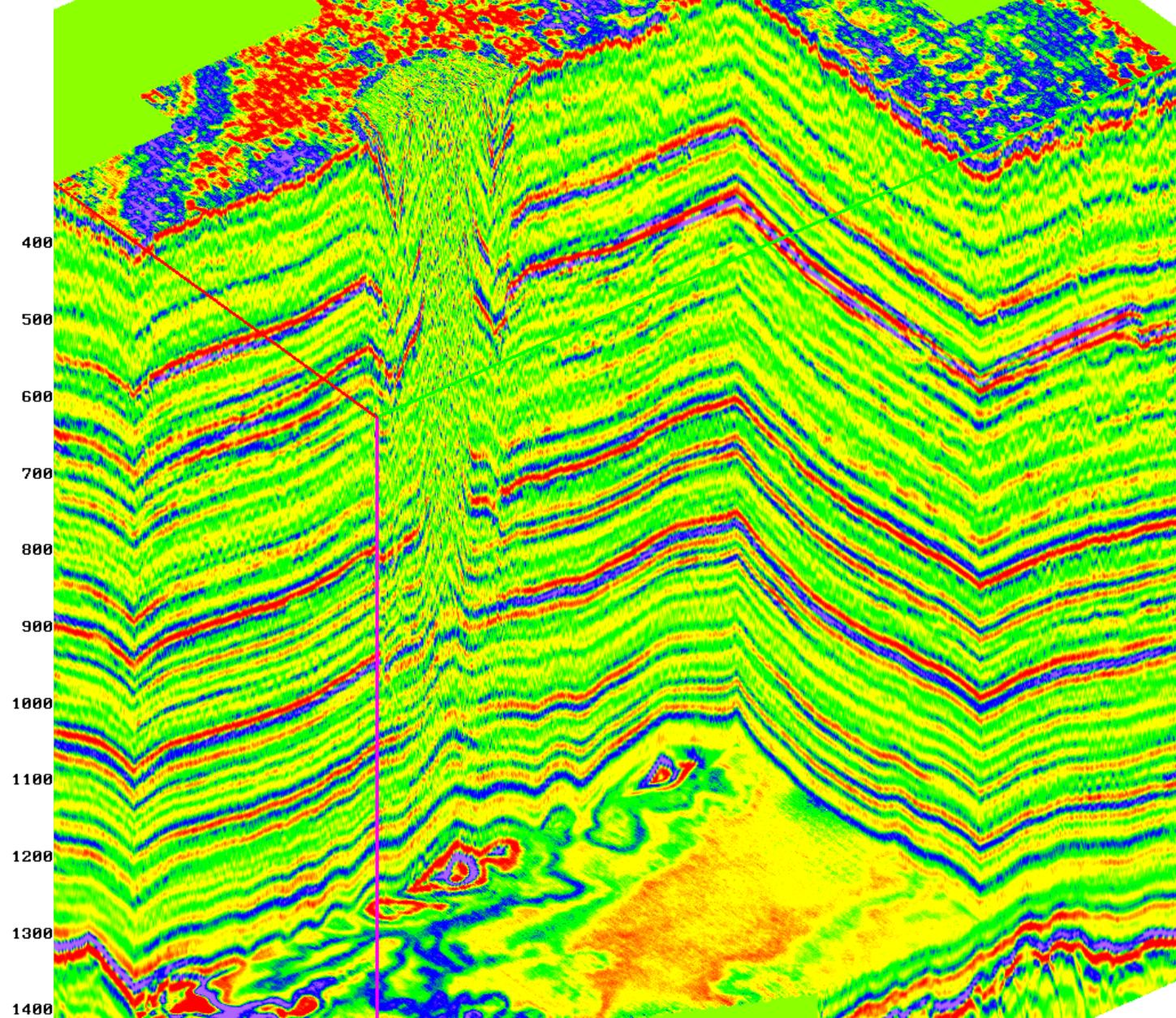FEATURES OF THE ACTIVE MANIFESTATION OF THE FRACTAL NATURE OF GEODYNAMICS AND OIL FIELDS
Бембель С.Р.
Ст. преподаватель, Кандидат геолого-минералогических наук, Тюменский Государственный нефтегазовый университет
ОСОБЕННОСТИ АКТИВНОГО ПРОЯВЛЕНИЯ ФРАКТАЛЬНОЙ ПРИРОДЫ ГЕОДИНАМИКИ И НЕФТЯНЫХ МЕСТОРОЖДЕНИЙ
Аннотация
Основной причиной фрактальной природа нефти, -и газоносных пластов в геологической среде является импульсно-вихревой характер процессов геодинамики, которые возникают в геофизических полях. Фрактальная модель пульсирующих геолого-геофизических полей для резервуаров нефти вносит принципиальные изменения в технологии их разведки, поиска и развития. Эффективный поиск и разведка фрактальных резервуаров, наполненных углеводородов в импульсном режиме возможен при современных геофизических методах.
Ключевые слова: фрактальная пульсирующая, субвертикальных зоны разрушения горных пород, дополнительных геологоразведочных работ, geosoliton, дегазации Земли, развитие высокого разрешения, 3D сейсмических
Bembel S.R.
Assosiate professor, PhD in Geology and Mineralogy, Tyumen State Oil and Gas University
FEATURES OF THE ACTIVE MANIFESTATION OF THE FRACTAL NATURE OF GEODYNAMICS AND OIL FIELDS
Abstract
The main reason for the fractal nature of the oil oil-and-gas-bearing formations and the geological environment in general is the pulse-vortex nature of the processes of geodynamics, which occurs in geophysical fields. The fractal pulsing model of geological and geophysical fields for hydrocarbon reservoirs introduces fundamental changes in the technology of their exploration, search and development. The effective search and exploration of fractal reservoirs that are filled with hydrocarbons in the pulsed mode are possible with high-resolution space-time geophysical methods.
Keywords: fractal pulsing, subvertical zone of destruction of rocks, additional exploration, geosoliton, degassing of the Earth, development, high-resolution 3D seismic
Current problems of petroleum geology are due to the general transition to the development of oil and gas fields characterized by complex spatial morphology of the pool boundaries and, at first sight an arbitrary distribution of reservoir properties. Studies carried out of recent years in West Siberia found a mismatch between increased level of structural complexity of developed oil and gas systems, and simplified conceptions of conventional exploration, focused on large deposits with simple averaged geological-field parameters. These simplified representations were a result of insufficient exploration of the fields introduced into development.
The increased lateral heterogeneity within separate developed pool leads to a more rapid production decline and increase of the production costs. To maintain the production levels and maximize the oil recovery factor in such fields there is a need in detailed further interwell space exploration to define more precisely a real spatial structure of the reserves in the field. This approach requires a solution a number of theoretical and technological problems to develop both the theory and mechanisms of the reserves mosaic structures formation and methods and technologies for exploration and development, which would fit this theory.
Studies of the spatial structure and identification of the structure regularities of such complex geology deposits, their interaction with the mechanisms of sedimentation, local geodynamics and the formation of the mosaic structure of reservoir properties offer a great promise in improving the profitability and oil recovery factor in the fields put into development, that will also significantly enhance the reserves at the expense of small size fields and deposits.
The author came to the concept and image of “fractality” based on numerous results of geological and geophysical interpretation, that is time seismic sections, structural maps of reflecting horizons and the productive formations upper boundary, as well as field-geophysical studies, namely logging and dynamics of production by wells, the distribution of reservoir properties in area and section.
The appearance of such multi-scale geological heterogeneities in the geological formations is a result of long-term processes of their generation, during which various nonlinear phenomena might occur (often accompanied by a dynamic randomization): the random mixing, cracking, accidental movement of fluids (with phase and chemical changes and transformations of the medium components and similar processes)
The analysis of several dozens oil and gas fields in West Siberia allowed the author to define a mosaic properties of the oil field and the wells productivity. Small size of the isolated deposits lead to a fast production decline at development by a natural depletion mode without maintaining the reservoir pressure. The problem of optimal placement of injection wells in the oil field with a mosaic structure becomes nontrivial, and its successful solution requires a detailed information about the contours of each isolated pool.
The author found that small structural inhomogeneities (paleo geomorphologic peculiarities of productive horizons) have a significant impact on the productivity of oil-bearing strata. A model of the distribution of zones of high productivity, depending on the location relatively selected areas of destruction has been proposed.
Lots of highly efficient powerful Cretaceous productive horizons (individual elongated lenses of the northeast trending) are confined mainly to the slopes of the local small uplifts. High flow-rate deposit sites have local spread, and their location is largely controlled by the morphology of the structural surfaces of the roof strata defined by paleotectonic activity.
The main features that distinguish natural fractal objects and processes from traditional Euclidean shapes, are as follows: the fractional dimension of shapes and processes that actually mean for the oil and gas industry "delicate" in the space bodies and pulsating geological processes; in addition to a fractional dimension the fractals possess the property of self-similarity of forms and processes, that is the likeness of themselves at different scales of time and space, forming systems similar to the "Russian dolls".
Fractality is inherent in all natural processes, including petroleum geology. Pulsating fractal processes having dimensionality less than 4, are known at levels of self-similar universe: from pulsars and Cepheids in distant galaxies to the pulsing of the Sun and Earth, from the throbbing blood process in the man to quantum processes and the fluctuations of the physical vacuum.
Fractal pulsing model of geological and geophysical fields of hydrocarbon fields introduces fundamental changes in the technology of their exploration, search and development. The effective search and exploration of fractal reservoirs that are filled with hydrocarbons in pulsed mode becomes possible with high-resolution space-time geophysical methods. In particular, the seismic 4D, successfully tested by the leading oil companies and focused on the fractal pulsating field.
The author believes that the mechanisms of realization of active geodynamic manifestations and impacts are also fractal, like most of the characteristic properties of natural geological objects. In West Siberia geophysists were the first who faced with the manifestation of local sites of geodynamics when interpreting the seismic data. We believe that the striking manifestation of these sires are subvertical zones of destruction (SZD). Certain regularities were revealed in the configuration of contours and transverse dimensions of the SZD in the horizontal sections.
Localized energy sources in the SZD sites provide relief generation of local diapirs - like structural forms, from the tops of which a discharge of sedimentary material occurs into the nearest negative structure with a simultaneous sorting of materials by fractions. As a result of these high-energy processes in the axial parts of the nearest paleocuttings, the local depressions valleys and separate "pockets" there accumulate the most coarse-grained sedimentary material with high permeability, since a more fine-grained clay material is drawn to a fairly large distance by high-energy turbidite flows generated by paleo earthquakes in the zones of destruction.
A high degree of localization of the sites of high productivity of exploratory and development wells is noticed in the majority of oil and gas fields in West Siberia. A characteristic feature of such sites and types of deposits is their extremely wide extension of vertical oil and gas range. At Novomolodezhny and Urengoi fields, for example, this range extends from the Paleozoic basement to the Cenozoic.
As an example, the manifestations of local geodynamic effects as centers of zones of destruction is given as a seismic section (fig.1) for one of the largest multilayer fields in Western Siberia, in the context of which more than 20 productive reservoirs containing more than 100 hydrocarbon deposits were revealed. Subvertical zones of destruction, serving as fluid dynamic channels of hydrocarbons saturation of the sedimentary cover, as well as intervals of the identified oil and gas deposits are shown at the time section.

Fig. 1 - Temporal incision sites and hotspots with areas of destruction, representing the migration routes of hydrocarbons, Western Siberia.
Floor petroleum 1000 meters - from the Lower Cretaceous strata to Middle Jurassic: 1 - an index reflecting horizon, 2 - zone of destruction, 3 - revealed deposits of hydrocarbons
Another confirmation comes from a geological, geophysical and field analysis performed in the unique multilayered Van-Egan field, which has the interval of oil and gas content more than 2000 m. In the field section more than 50 productive strata were identified containing oil, gas, oil-and-gas deposits.
A degree of localization of enhanced oil withdrawal sites is very high. The cumulative oil production for separate wells reaches about 500 thousand tons or more, and in the most part about 10-20 thousand tons. Communication between the sites of high flow rate, high total production and low water-cut oil production and low-sized squares intersected by the SZD and active geosoliton tubes, exists almost universally and is proved by comparing these sites with the results of 3D-seismic survey, which reliably distinguished the SZD.
Geosoliton pulse-rotating transport from the deep geosphere of the Earth in the Mesozoic-Cenozoic interval of geological cross-section forms the main elements of oil and gas fields, i.e. structural and lithologic traps, zones of improved reservoir properties and centers of high concentration of oil and gas. SZD, crossing almost the entire target range of geological sections are mostly circular shape, which is due to the vortex form “geosoliton” tectonics (active local geodynamics).
Main morphological feature of such oil and gas deposits on most fields in West Siberia is their extremely high locality, which is due to the properties of the active centers of the zones of destruction. This is reflected in a high degree of locality of high flow-rate areas and the mosaic character of their spatial distribution.
The concept of geosoliton degassing can explain the method of gas pipes, used to distinguish areas of vertical migration of hydrocarbons and for the differentiation of conductive and nonconductive faults. A prerequisite for the generation of channels of degassing (gas pipes) is the existence of active geodynamic near the source and the consequences of its manifestations - the zone of destruction (usually subvertical). The degree of disturbance of the tires in the chamber will determine the degree of deposits preservation and the vertical intensity of the center of destruction - the likely level of oil and gas content.
On fig.2 shows a fragment of time cut with the attribute of coherence, where the greatest destruction subjected to upper range of the section (above 800 msec). The anomaly has the correct form of a circle with an outer diameter of up to 4 km in the upper part of the section, tapering to a lower part and recalling a funnel shape (fig.3). Probable variant interpretations of the above example is the appearance at the site of gas release (break fluids) from the foundation of high pressure that led to the formation of oil and gas (inflow of gas more than 200 m3/day from the weathering crust of the Jurassic formations - oil to 170 m3/day).

Fig. 2 - Time section with the attribute of coherence, West Siberia.
Oil and gas condensate field (3 productive reservoir). Floor oil and gas 200 meters - from the Upper Jurassic strata II to the cortex weathering

Fig. 3 - Subvertical zone of destruction in the context of 3-D seismic cube, West Siberia
The above examples highlight foci of active geodynamics, fluid- and gas dynamics - demonstrate the general principles and approaches for supporting the genetic models of oil and gas fields, some of the most striking features of display mechanism geosoliton degassing on seismic sections and are of interest for further research. Relevance of geodynamics processes, degassing of the Earth and the role of fluid systems in the generation and transformation of the earth's crust, its localization within the solid, liquid or gaseous mineral resources is widely spread among the modern scientific and practical researches. In this regard, there new requirements appear towards the technology of forecasting and search for mineral deposits.
CONCLUSION
Fractality of natural processes and structures in geology, geophysics and geochemistry defines a mosaic structure of the majority of mineral deposits, including deposits of oil and gas, gas condensate and other fossil fuels (gas hydrates, oil shale, etc.).
Fractality deposits is genetically determined by geosoliton processes of deposits formation. This view of the most important properties of space-time structure of reserves is manifested at all stages of exploration - from the search, exploration to development. Practically proved is a regular confinement of local sites of high productivity of wells to the active sites of geosoliton geodynamics. The problems of exploration and development of such deposits and fields are to be resolved in the nearest future.
Литература
1. Bembel, R.M., Megerya, V.M., Bembel, S.R. [2003] Geosolitons: a functional system of the Earth, the concept of exploration and exploitation of hydrocarbon deposits. Tyumen: Vector Book. – 344 p.
2. Bembel, S.R. [2010] Features of contemporary local geodynamics in the western part of Khanty-Mansiysk, their connection with areas of oil and gas. Oil and Gas Geology, 4, p.8-12.
3. Fractals in petroleum geology and Earth processes. Ed. Barton C.C. and La Pointe P.R., N.Y. and London: Plenum Press, [1995].
4. Heggland, R. [2004] Hydrocarbon migration and Accumulation Above Salt Domes—Risking of Prospects by the use of Gas Chimney, Processing of 24-th Annual GCSSEPM Foundation Bob F. Perkins Research Conference, “Salt-Sediment Interaction and Hydrocarbon Prospectivity: Concepts, Application, and case Studies for the 21st Century”, December 5-8, 2004, Houston, Texas.
References
Bembel, R.M., Megerya, V.M., Bembel, S.R. [2003] Geosolitons: a functional system of the Earth, the concept of exploration and exploitation of hydrocarbon deposits. Tyumen: Vector Book. – 344 p.
Bembel, S.R. [2010] Features of contemporary local geodynamics in the western part of Khanty-Mansiysk, their connection with areas of oil and gas. Oil and Gas Geology, 4, p.8-12.
Fractals in petroleum geology and Earth processes. Ed. Barton C.C. and La Pointe P.R., N.Y. and London: Plenum Press, [1995].
Heggland, R. [2004] Hydrocarbon migration and Accumulation Above Salt Domes—Risking of Prospects by the use of Gas Chimney, Processing of 24-th Annual GCSSEPM Foundation Bob F. Perkins Research Conference, “Salt-Sediment Interaction and Hydrocarbon Prospectivity: Concepts, Application, and case Studies for the 21st Century”, December 5-8, 2004, Houston, Texas.
